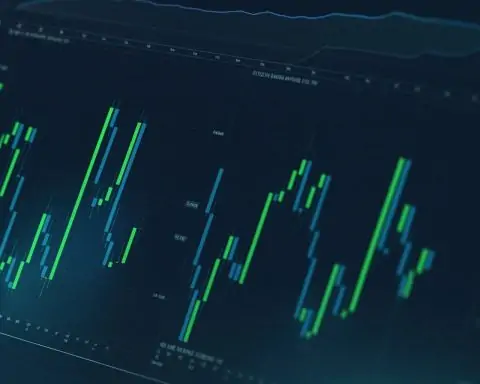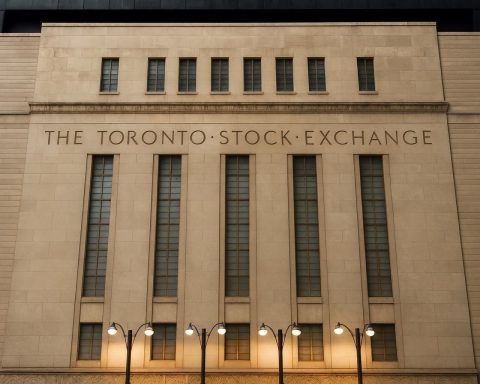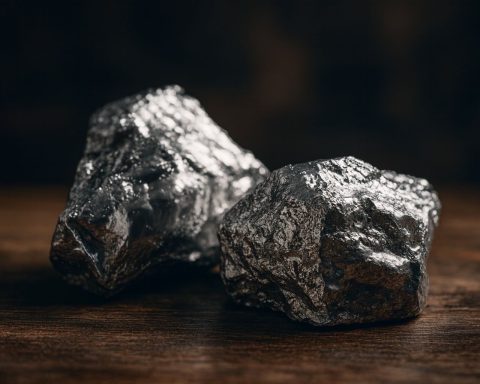Key Facts: Gold hit fresh all-time highs (peaking around $3,895/oz) as traders piled into safe-havens [1]. Silver climbed to ~$47–48, its highest in 14+ years [2]. Platinum rallied above $1,580, and palladium topped $1,260 on Oct 1 [3]. These moves were driven by looming U.S. risks (a partial government shutdown) and heavy Fed rate-cut bets [4] [5]. Chinese markets were shut for the National Day holiday on Sept 30, triggering a pullback in bullion prices [6], while India’s gold/silver imports nearly doubled in September as buyers stocked up for Diwali [7]. Analysts remain broadly bullish: Goldman Sachs projects ~$4,000 gold by mid-2026 [8], and chart analysts point to strong support near $3,820 with further upside to ~$3,933 if the rally holds [9] [10].
Price Movements (Sept 30 – Oct 1, 2025)
Precious metals roared higher over this period, with brief profit-taking on Sept 30. On Tuesday Sept 30 London trading, gold briefly hit a record $3,871/oz before slipping about $80 [11]. By Wednesday Oct 1 gold climbed again, briefly touching $3,895.09/oz [12] (opening the U.S. session near $3,891 [13]) before settling slightly lower. Silver followed suit: it had pierced $47/oz in late Sept, eased to ~$46.4 on Sept 30 [14], then rallied to about $47.4/oz on Oct 1 [15]. Platinum and palladium – traditionally used in auto-catalysts – also jumped. Platinum traded around $1,576–1,583/oz (up ~0.6% on Oct 1) [16], after peaking near $1,628 on Sept 29. Palladium was about $1,249/oz on Sept 30 [17] and rose to $1,263/oz on Oct 1 [18]. By Oct 1 morning EST, Kitco spot prices showed gold ~$3,884 (up 0.7%), silver ~$47.15 (up 1.2%), platinum ~$1,578 (up 0.25%), and palladium ~$1,243 (up 0.16%) [19] [20].
Overall, gold finished September up ~11.5% for the month (its best monthly gain since Aug 2011) [21]. Silver rose ~17% in September [22]. Platinum has surged over 70% year-to-date [23], and palladium also made multi-year highs. Tuesday’s pullback was viewed as a healthy correction: Chinese bank ICBC noted that the sell-off “kicked off in silver before spilling into gold,” likely driven by month-end profit-taking [24]. In all, the two-day move left bullion prices extremely elevated.
Economic, Geopolitical & Supply/Demand Drivers
Several factors fueled the metals rally. In the U.S., political brinkmanship led Congress to fail to pass a funding bill – triggering a partial government shutdown on Oct 1 [25]. This uncertainty boosted safe-haven flows into gold. At the same time, key data (August job openings, ADP employment, etc.) showed a cooling labor market. With the Fed already having cut rates 25 bps in September, markets saw ~95–97% odds of another cut in October [26] [27]. As Deutsche Bank notes, gold thrives when central bank policy is easing: U.S. interest rates “are still above the neutral rate” and if the economy softens, “you need to get towards the neutral rate” (implying further cuts) [28]. The U.S. dollar, after briefly strengthening in September, slid to one-week lows in early Oct, making dollar-priced bullion cheaper for overseas buyers [29] [30].
In China, the first week of October is Golden Week (National Day holiday). With all markets closed on Sept 30, China – the world’s largest gold buyer – temporarily stepped out of the market. BullionVault reported London prices “plunged” as Asian liquidity dried up [31]. Meanwhile, Shanghai Gold Exchange trading set a new ¥872/g record (the 36th high of 2025) [32], but Chinese dealers offered gold at the steepest discount to London in ~5 years (around $55/oz) [33], reflecting weaker local buying despite global highs. In fact, Chinese demand has paused at these levels – dealers are even widening discounts to entice buyers [34].
By contrast, Indian demand has surged. India (the No.2 consumer after China) saw gold and silver imports nearly double in Sept vs Aug [35]. Banks and jewelers rushed to clear imports before new tax hikes and ahead of the October Diwali festival, paying premiums. A local dealer noted that even as prices hit records, “buyers kept chasing them” to stock up [36]. Domestic gold futures hit record ₹116,900/10g, silver ₹144,330/kg (both on Sept 30) [37], and exporters cite up to an $8/oz import-premium [38]. Strong Indian buying – at a time when Chinese buyers are on holiday – has helped underpin prices.
On the supply side, there is little that would dampen prices. Global mined output of gold, silver and PGMs is tight, and central banks have been accumulating bullion at record rates. In fact, official sector buying is a key factor: Goldman Sachs observes central bank gold purchases have jumped five-fold since 2022 [39]. Most surveyed central banks expect to increase reserves (none plan to cut) over the next year [40]. In short, geopolitical/geoeconomic concerns (U.S. shutdown, still-fragile wars, debt loads) and seasonal Indian demand are currently boosting this “precious” group’s prices.
Central Banks & Monetary Policy
Monetary policy is a core driver of the rally. As of late Sept, the Fed has entered an easing cycle – its first cut since 2024 – and market bets on further cuts have soared [41] [42]. CME data showed ~97% odds of an Oct cut [43]. Fed officials (e.g. Governor Miran) have signaled willingness to cut aggressively if needed. This dovish backdrop lowers real yields, which makes non-yielding assets like gold more attractive. Indeed, analysts note gold “thrives in a low-interest-rate environment” [44].
European or Asian central banks are not directly in the headlines for October, but the general global easing trend (many central banks around the world are at or near neutral rates) suggests continued support. Notably, China’s government and banks – usually big gold buyers – have been relatively quiet amid last year’s easing, but with Gold at records, any PBOC easing (even if modest) could further weaken the yuan and bid up local gold prices.
Separately, the sharp rally has raised questions about an eventual “peak” and profit-taking. Some traders (especially month-end funds) have taken money off the table. But ICBC noted that any pullbacks may be short-lived: the recent sell-off “was probably triggered by noisy month-end flows” rather than any fundamental shift [45].
Expert Commentary & Forecasts
Market experts remain broadly bullish on precious metals. The safe-haven narrative is pervasive: as one veteran trader put it, the unfolding US shutdown “adds to the chorus of ‘buy gold’” [46]. ActivTrades’ Ricardo Evangelista similarly points out that the new political impasse will “weigh on economic output,” reinforcing the case for easier Fed policy and higher gold [47]. Julius Baer’s Carsten Menke observes that U.S. rates are still restrictive, so further Fed easing (if growth slows) would be “positive for gold” [48].
ABC Refinery’s Nicholas Frappell notes technical and psychological factors in play. He sees gold’s bull trend intact and thinks the metal could test $3,900–4,000 in the near term, driven by a weaker dollar and ongoing global tensions [49]. Deutsche Bank’s Michael Hsueh, however, cautions that a sudden dollar rebound or unexpectedly hawkish Fed statement could halt the advance [50] – a reminder that gold’s climb is not guaranteed.
Institutional forecasts echo these views. In a report published Sep 30, Goldman Sachs projected gold would reach $4,000/oz by mid-2026 [51]. Goldman’s analysis highlights that robust central bank demand and Fed easing are key drivers. They note central banks (especially in EM countries) are underweight in gold and “gradually increasing allocations” [52], implying structural upside. The Goldman team emphasizes that every 100 tonnes of net central-bank buying historically lifts gold ~1.7% [53]. In the current climate, Goldman expects demand to persist and even believes gold is “more likely to exceed” these targets than fall short [54].
Silver and the PGMs also have bullish technicals. After silver’s big rally, analysts point out the gold:silver ratio is still high (~86, above its five-year average of 82) [55]. This suggests silver could continue catching up. Platinum’s steep climb (up ~50% this year) has been attributed to South African production constraints and tariff talk [56]; many strategists believe it has room to run further if supply remains tight and auto demand holds. Palladium, while slightly off its peak, still enjoys robust automotive use.
Overall, the consensus is that the metals bull market has legs into late 2025. Seasoned analysts highlight that nothing in the data so far contradicts the rally: inflation is moderating, global growth is slowing, and deficit spending is high. As one commentator puts it, “buy-demand is high from central banks and investors,” and with U.S. fiscal stalemate and easing on the horizon, gold (and its cousins) are set to benefit [57] [58].
Technical Outlook and Future Trends
Technically, gold remains in a firm uptrend. Chart analysts from FX Leaders note gold “is respecting its rising channel,” consistently making higher highs and lows [59]. Key near-term support lies around $3,820–3,840, with immediate resistance near $3,888–3,912 [60]. A daily close above ~$3,888 would strengthen bullish momentum, potentially opening the path to ~$3,933 [61] (their next target). Recent candlestick patterns (the classic “three white soldiers”) and a rising RSI (around 64) suggest buyers are in control [62]. For now, traders will watch those levels; a break above $3,900 could quickly bring $4,000 into focus.
Silver charts also look strong (not shown), having pulled back only modestly on the 9/30 correction. Platinum and palladium, while volatile, have established higher bases. Notably, all four metals remain well above their year-start levels, suggesting momentum is still with the bulls.
In summary: Late Sept–early Oct saw a seismic shift in precious metals markets. Gold at $3.8–3.9k, silver at $47+, platinum at $1.58k, and palladium at ~$1.26k are eye-popping levels. These moves were driven by a potent mix of safe-haven demand (U.S. political risk, Fed easing), seasonal buying (India/Diwali), and continued strong central-bank appetite. Leading analysts forecast more gains ahead – Goldman Sachs sees ~$4,000 gold by mid-2026 [63], and traders point to technical targets near that range [64]. Of course, any surprise (stronger U.S. data or Fed hawkishness) could cause a pullback. But as of Oct 1, the “precious metals panic” (in a good way for holders) is in full swing.
Sources: Reuters, BullionVault, Kitco, FX Leaders, and Goldman Sachs research [65] [66] [67] [68] [69] [70].
References
1. www.reuters.com, 2. www.reuters.com, 3. www.reuters.com, 4. www.reuters.com, 5. www.reuters.com, 6. www.bullionvault.com, 7. www.reuters.com, 8. www.goldmansachs.com, 9. www.fxleaders.com, 10. www.goldmansachs.com, 11. www.bullionvault.com, 12. www.reuters.com, 13. www.reuters.com, 14. www.reuters.com, 15. www.reuters.com, 16. www.reuters.com, 17. www.reuters.com, 18. www.reuters.com, 19. www.kitco.com, 20. www.kitco.com, 21. www.reuters.com, 22. www.reuters.com, 23. www.bullionvault.com, 24. www.bullionvault.com, 25. www.reuters.com, 26. www.reuters.com, 27. www.reuters.com, 28. www.reuters.com, 29. www.reuters.com, 30. www.fxleaders.com, 31. www.bullionvault.com, 32. www.bullionvault.com, 33. www.bullionvault.com, 34. www.reuters.com, 35. www.reuters.com, 36. www.reuters.com, 37. www.reuters.com, 38. www.reuters.com, 39. www.goldmansachs.com, 40. www.goldmansachs.com, 41. www.reuters.com, 42. www.reuters.com, 43. www.reuters.com, 44. www.reuters.com, 45. www.bullionvault.com, 46. www.reuters.com, 47. www.reuters.com, 48. www.reuters.com, 49. www.fxleaders.com, 50. www.fxleaders.com, 51. www.goldmansachs.com, 52. www.goldmansachs.com, 53. www.goldmansachs.com, 54. www.goldmansachs.com, 55. www.reuters.com, 56. www.ipmi.org, 57. www.goldmansachs.com, 58. www.fxleaders.com, 59. www.fxleaders.com, 60. www.fxleaders.com, 61. www.fxleaders.com, 62. www.fxleaders.com, 63. www.goldmansachs.com, 64. www.fxleaders.com, 65. www.bullionvault.com, 66. www.reuters.com, 67. www.reuters.com, 68. www.reuters.com, 69. www.fxleaders.com, 70. www.goldmansachs.com










